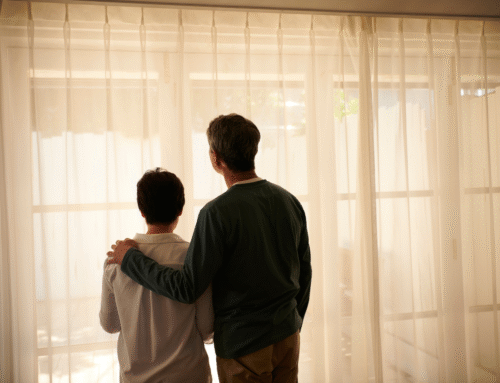
Death and social media
In July of 2013, NPR Weekend Edition host Scott Simon began tweeting from the ICU of a Chicago hospital. For the next week, as he watched his mother’s condition worsen until her eventual passing, he shared everything from interactions with ICU nurses to his mother’s wisecracks and life lessons with his thousands of Twitter followers. Simon’s tweets quickly went viral, spreading across the Web to reach millions and millions of people in countries across the globe. The episode sparked debate on a topic that few had previously considered: what is the place of social media in the processes of dying, death, and bereavement?
Until the mid-19th century, dying was something you did at home. Prior to the institutionalization of health care, family members were the primary caregivers for their beloved. The boundaries of that care extended past the point of death, to the preparation and display of the bodies of the recently deceased, all taking place within the walls of the family home. Today, we die in hospitals— in fact, death and the hospital are so closely entangled in today’s collective imagination that many of us are possessed of the unshakeable conviction that hospitals are “where you go to die.”
Despite the best and most tireless efforts of medical professionals, a hospital is not a home. For the friends and family of the dying person, a hospital is a place almost impossibly distant from the routines and comforts of daily life. To enter the hospital is to leave the world we know and enter a different one entirely, one full of strange noises and strange faces, people we don’t know speaking in languages we cannot comprehend. Death does not sit easily in the minds of the living, to begin with; when death happens in the hospital it becomes even more incomprehensible, even more, unlivable by virtue of the fundamental strangeness of the place. We become weightless, deafened, confused.
How do we make death feel human under these circumstances? We cannot bring the hospital or the hospitalized person back out into the world, but we can, in some ways, bring the world into the hospital. Sharing a thought, memory, or even a photo or video on Facebook, Twitter, or Instagram brings friends and family to the bedside of the dying person. Comments, reactions, and messages received remind both patient and caregivers that gravity holds, that the logic of the daily world still applies, that death does, after all, have a place in life. In other words, social media can help to bring about the de-institutionalization of our experiences of death and dying.
Posting about death and dying on social media can also help to distribute the terrible weight of grief. Pain— both in general and in the specific circumstances of the loss of a loved one— demands to be expressed. And yet, the grieving person often feels unable to talk to a best friend or family member because “they can’t possibly understand what I’m going through.” The fear of being disappointed by a close confidante’s lack of understanding— of being, in a sense, betrayed— is often great enough to stop the grieving person from expressing his or her grief. Guilt at feeling too much, too intensely can heighten this barrier.
When we post on Twitter or Instagram, it’s hardly ever with a specific reader in mind; instead of holding an intimate conversation, we might imagine interacting with social media more in terms of speaking in front of a crowd, albeit a crowd composed of our friends, colleagues, and acquaintances. This balance between the personal and the impersonal make social media a useful outlet for grief, as spreading the burden of loss out over the width of a digital crowd can make it easier to bear. Plus, sharing experiences of grief can have unexpected benefits: a recent study showed that close friends of a deceased person “immediately increased interactions with each other and maintained these added interactions for years after the loss.”
So far we’ve discussed social media in the abstract. But, of course, we don’t live in the abstract. There are real people at both ends of a tweet or a Facebook post; someone is posting and someone is reading and someone is the subject of the post in question. The privacy of the dead or dying person as well as the privacy of the grieving are important considerations.
It’s important to remember that elders, in particular, may not understand what Facebook is or does, let alone hold an account. Explaining to a parent or grandparent that “I’ve been tweeting about you” isn’t likely to yield a productive conversation; asking whether it’s okay that “I’ve been sharing stories about you with some of my friends” might be a better tack. For someone with a higher level of technological fluency, social media might be a crucial aspect of end-of-life planning.
Do you want your Facebook account deactivated after you pass? Do I have your consent to post photos from your funeral to my Instagram? As our digital assets come to outnumber our physical effects, the answers to these kinds of questions constitute a new way for the dying person to maintain agency and a sense of control over their death.
Social media offers new opportunities to interact with mortality in meaningful ways but, in doing so, raises new questions about privacy and consent in the processes of dying and bereavement. Posting about death and dying may feel painful or awkward, but it can help us to remember that death is human and that it touches us all, in a continuous unchanging manner.
Image Source:
About the Author
Dr Gavril Hercz
Dr. Gavril Hercz is a nephrologist at Humber River Health and Associate Professor of Medicine, University of Toronto. He completed his psychoanalytic training at the Toronto Psychoanalytic Institute and is a member of the Canadian Psychoanalytic Society. His major area of interest is the impact of physical illness on patients, families, and caregivers.
In July of 2013, NPR Weekend Edition host Scott Simon began tweeting from the ICU of a Chicago hospital. For the next week, as he watched his mother’s condition worsen [...]



